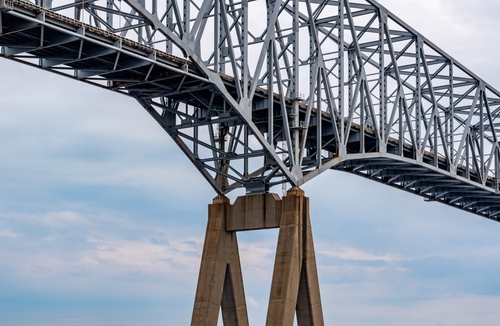
The U.S. Department of Transportation said current data does not show signs of a bottleneck in the supply chain as a result of the collapse of the Francis Scott Key Bridge in Baltimore.
As part of ongoing work to identify and mitigate possible supply chain disruptions caused by vessel traffic in and out of the Port of Baltimore necessitated by the bridge’s collapse, the DOT held a call with shippers, ports, ocean carriers, railroads, trucking companies, and others participating in the FLOW initiative. The department discussed changes in container traffic into East Coast ports.
The Francis Scott Key Bridge collapsed in the early hours of March 26 when the 1,000-foot container cargo ship Dali lost propulsion and slammed into the bridge at about 8 knots per hour. The bridge collapse force Port of Baltimore officials to shut the port to incoming and outgoing ship traffic. Experts have warned that the port’s closure could disrupt the supply chain. The Port of Baltimore is one of the busiest ports for automobiles and other vehicles in the country, and one of the busiest port’s on the East Coast.
DOT staff shared with FLOW Initiative stakeholders what the federal government is doing in response to the collapse, and its continued efforts to address potential economic disruptions. Inbound container traffic has changed over the course of the past week at the Port of Savannah and the Port of New York and New Jersey, DOT staff said. But the current data does not show signs of bottlenecks at those two ports in the near term.
DOT staff said they would continue to provide weekly updates to FLOW participants throughout the closure of the port as diversions continue.